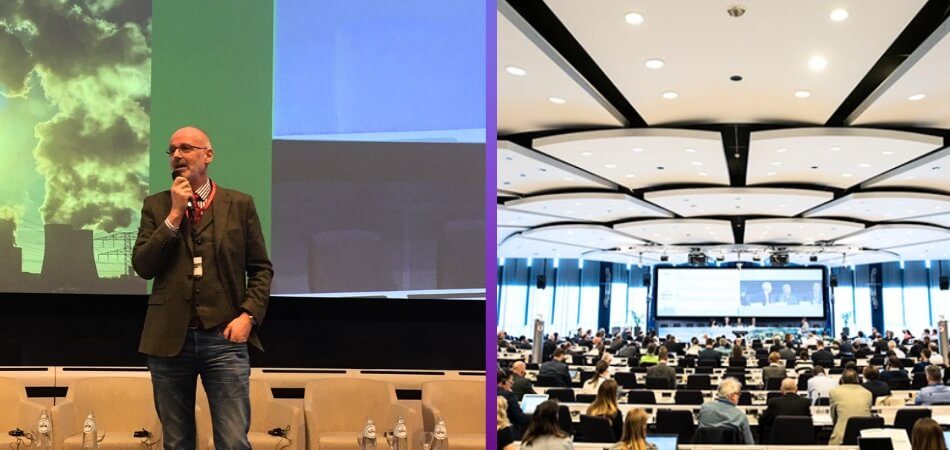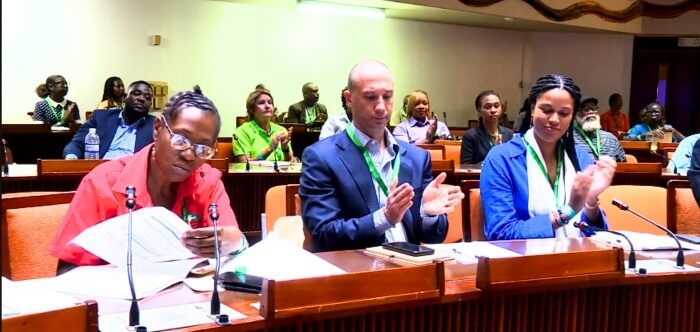Forestry, the art and science of managing our planet’s precious woodlands, has long been a cornerstone of environmental stewardship. Yet, within this vast and vital field, one question looms large: What is Forestry Conference?
The Forestry Conference is an annual gathering where experts, scholars, and nature enthusiasts meet to exchange knowledge, discuss conservation, and explore green technologies, shaping the future of forests and sustainability.
In this blog, we’ll uncover why an annual forestry event matters. It’s where experts, scholars, and nature enthusiasts meet to share knowledge, discuss conservation, and explore green technologies. Come along as we explore how this conference impacts our forests and sustainability.
What Does Forestry Mean?
Forestry is a field that holds immense global significance. As we discuss this, an essential question emerges: what is a Forestry Conference? Such events are designed to explore the complexities of forest management, conservation, and sustainability, bringing together experts dedicated to protecting and understanding forest ecosystems.
These conferences serve as hubs for sharing the latest research, technologies, and sustainable practices in forestry. Experts, researchers, and professionals come together to discuss pressing environmental challenges, including deforestation, climate change, and biodiversity loss. By exchanging insights, they contribute to innovative strategies that help preserve global forests for future generations.
Beyond academic discussions, forestry conferences play a crucial role in shaping conservation policies and initiatives. These gatherings encourage collaborative efforts, enabling professionals to develop solutions that address both local and international environmental concerns. Discussions often lead to actionable strategies that support sustainable forest management worldwide.
For those professionals looking to engage in global forestry discussions often attend international conferences in Canada, where experts from different regions share knowledge on conservation, sustainable practices, and environmental policies. Such events provide a platform for meaningful exchanges, fostering new partnerships and advancing efforts to protect forest resources globally.
What is Forestry Conference?
Forestry is a field that holds immense global significance. As we discuss this, an essential question emerges: what is Forestry Conference? Such events are designed to delve deeper into the vast world of forestry.
The Internation Forestry Conference is a gathering centered around the study and management of forests. It connects experts, researchers, and professionals committed to understanding and conserving forest ecosystems. These events serve as hubs for the latest findings, technologies, and sustainable practices in forestry.
Beyond just academic and professional knowledge, these conferences play a critical role in global conservation efforts. They address pressing issues like deforestation, climate change, and biodiversity loss. By sharing strategies and solutions, participants work collectively to safeguard our planet’s forests.
Networking is a significant component of any Forestry Conference. Attendees form partnerships, exchange field experiences, and discuss potential collaborations. In doing so, they ensure a unified approach towards the betterment and conservation of global forest resources.
Different Types of Forestry Conference
Forestry encompasses various facets, each crucial for the sustainable management of global woodland resources. As such, numerous types of Forestry Conference organizers exist to address these diverse aspects. Let’s delve into some prominent ones.
Silvicultural Conferences
Focused on the art of cultivating forests, these events dissect tree growth, health, and management. They delve into practices ensuring sustainable timber production. Innovative tree-planting techniques are also frequently highlighted.
Conservation Forestry Conferences
These gatherings prioritize forest preservation and biodiversity protection. Experts discuss threats like deforestation and habitat destruction. Strategies to combat these challenges and protect endangered species are central topics.
Urban Forestry Conferences
Urban environments increasingly integrate green spaces for ecological balance. These conferences explore the role of trees in urban planning. Discussions revolve around urban tree management, benefits, and challenges.
Agroforestry Conferences
Blending agriculture with forestry, agroforestry promotes sustainable land use. Participants at these events explore integrated farming techniques. They share insights on optimizing both crop yield and forest health.
Forest Products Conferences
Beyond timber, forests offer myriad products. These events showcase the sustainable harvesting of non-timber forest products. Attendees discuss market trends, value addition, and innovative product utilization.
Fire Management Conferences
Forest fires pose significant threats globally. At these gatherings, professionals exchange insights on fire prevention and control. They also address the ecological role of fire in certain ecosystems.
The multifaceted world of forestry necessitates specialized conferences to address each dimension effectively. From urban planning to fire management, these events play a pivotal role in advancing knowledge and fostering collaboration.
How Forestry Conference Impacts our Forests and Sustainability?
Forests are the lungs of our planet, vital for both ecosystems and human survival. Delving into Forestry Conferences reveals their profound impact on our woodlands and sustainability goals. Let’s explore these connections.
Knowledge Dissemination
Forestry Conferences can be expected to provide groundbreaking research and findings. By ensuring wide-reaching sharing of the latest studies, attendees absorb new knowledge. This information empowers them to implement positive change in their respective regions.
Best Practice Sharing
Diverse professionals converge, bringing unique insights from their locales. This blend of experiences provides a platform for sharing proven forestry management practices. Such exchanges promote a global standard for sustainable and efficient forest management.
Global Collaboration
Forests worldwide face interconnected threats, from invasive species to climate change. Conferences bridge international divides, fostering cooperative solutions. Unified global efforts then address these challenges more holistically and effectively.
Technology Advancement
In a rapidly evolving world, staying updated is paramount. Conferences introduce attendees to the newest forestry technologies and methods. By harnessing these innovations, forest management can become more precise, effective, and sustainable.
Policy Formation Influence
Decision-makers and influencers find these forums enlightening. Interacting with experts provides them with a comprehensive understanding of forestry dynamics. Informed by these insights, they can draft policies that better cater to sustainable forestry and conservation needs.
Local Community Engagement
Forests are not just resources; they’re homes to many communities. Conferences stress the importance of involving these indigenous and local groups in decisions. Recognizing and respecting their deep-rooted forest knowledge ensures more inclusive and effective conservation efforts.
Climate Change Mitigation
Forests play an indispensable role in regulating global temperatures. Through photosynthesis, they absorb vast amounts of carbon dioxide. Conferences underline forest management practices that bolster this natural climate buffer, emphasizing reforestation and afforestation strategies.
Conclusively, Forestry Conferences are nexus points where science, tradition, policy, and innovation converge. The ripples from these events extend far beyond their venues, influencing global forestry practices, policies, and the health of our forests. They are instrumental in guiding our path toward a more sustainable and green future.
Tips for Choosing the Right Forestry Conference to Attend
With so many conferences available to professionals and hobbyists, exploring across the globe of forestry can be both educational and daunting. Selecting the appropriate conference might mean the difference between a dull and rewarding event. To guide you in making this pivotal decision, here are some detailed tips.
- Define Your Goals: Start by understanding your objectives for attending a conference. Whether it’s research, networking, or skill enhancement, your clear goals will make the selection process smoother.
- Check the Speakers: Prominent speakers bring a wealth of expertise to the table. Delve into their backgrounds and past work to ensure the content resonates with your interests.
- Evaluate the Agenda: An event’s agenda offers a roadmap to its offerings. Scrutinize the topics and session structures to confirm that they address your areas of interest.
- Location Considerations: While the essence of the conference is pivotal, the logistics matter too. Think about travel, accommodation, and the venue’s environment before committing.
- Duration and Date: Consider the conference’s timeline in relation to your availability. The right alignment ensures you can benefit from all key sessions without unnecessary rush.
- Networking Opportunities: Building connections is a significant advantage of conferences. Opt for those that promote interactive sessions, breakout rooms, or networking events with peers and leaders.
- Feedback from Previous Years: Prior attendees’ experiences can be illuminating. Their testimonials or reviews can offer an unbiased glimpse into the event’s efficacy and relevance.
- Cost Implications: While investing in learning is commendable, fiscal prudence is essential. Assess the event’s fees against the potential learnings and opportunities it provides.
- Check for Workshops: In-depth, hands-on sessions can bolster theoretical knowledge. Prioritize conferences that blend lectures with practical, interactive workshops.
- Size and Scale: The ambiance of a conference can affect your experience. Determine whether you thrive in large conventions or prefer more intimate, focused gatherings.
The right Forestry Conference can be a gateway to broader horizons, novel insights, and invaluable connections. By considering these aspects, you can position yourself for a fulfilling and impactful conference experience.
Bottom Line
Forestry conferences play a key role in our understanding of the environment. When we ask, What Is Forestry Conference? We’re delving into a world where experts and enthusiasts gather to share knowledge. These events help us appreciate the importance of forests and the methods to care for them.
Through these conferences, individuals from around the globe come together, share innovations, and form valuable connections. The insights gained not only enlighten attendees but also pave the way for sustainable forest management and conservation efforts.
In essence, these gatherings are more than just meetings. They are a beacon, guiding us toward a sustainable future, and ensuring that our forests, the lungs of our planet, continue to thrive for generations to come.








